Abstract
Carboxyhaemoglobin (COHb) levels in tobacco smokers vary throughout the day since they are affected by the pattern of tobacco consumption and the rate at which COHb is eliminated. A method is described whereby a single COHb measurement together with a recent smoking history may be used to estimate the average COHb "boost" produced by each cigarette, the total daily carbon monoxide (CO) uptake from smoking, and the mean COHb level throughout the day. These three indices of tobacco smoke absorption were estimated in nine healthy cigarette smokers on different days, each set of three estimations being derived from separate COHb determinations. The indices were reasonably reproducible within the same person, and the differences between people were statistically highly significant (P less than 0-001). For example, the estimates of mean daily COHb level resulting from smoking ranged from 0-7% to 9-3% in smokers who smoked 15 to 40 cigarettes a day. These differences are sufficiently large to distinguish possible differences in the risk of developing diseases such as ischaemic heart disease which may result from the inhalation and absorption of tobacco smoke. The suggested indices also depend less on the time of the blood test and on the daily pattern of smoking than a COHb level alone. The ratio of the COHb boost to the CO yield of a cigarrette may reflect depth of inhalation more accurately than a smoker's self-assessment. Moreover there was little correlation between these two measures of inhalation in the nine subjects studied.
Full text
PDF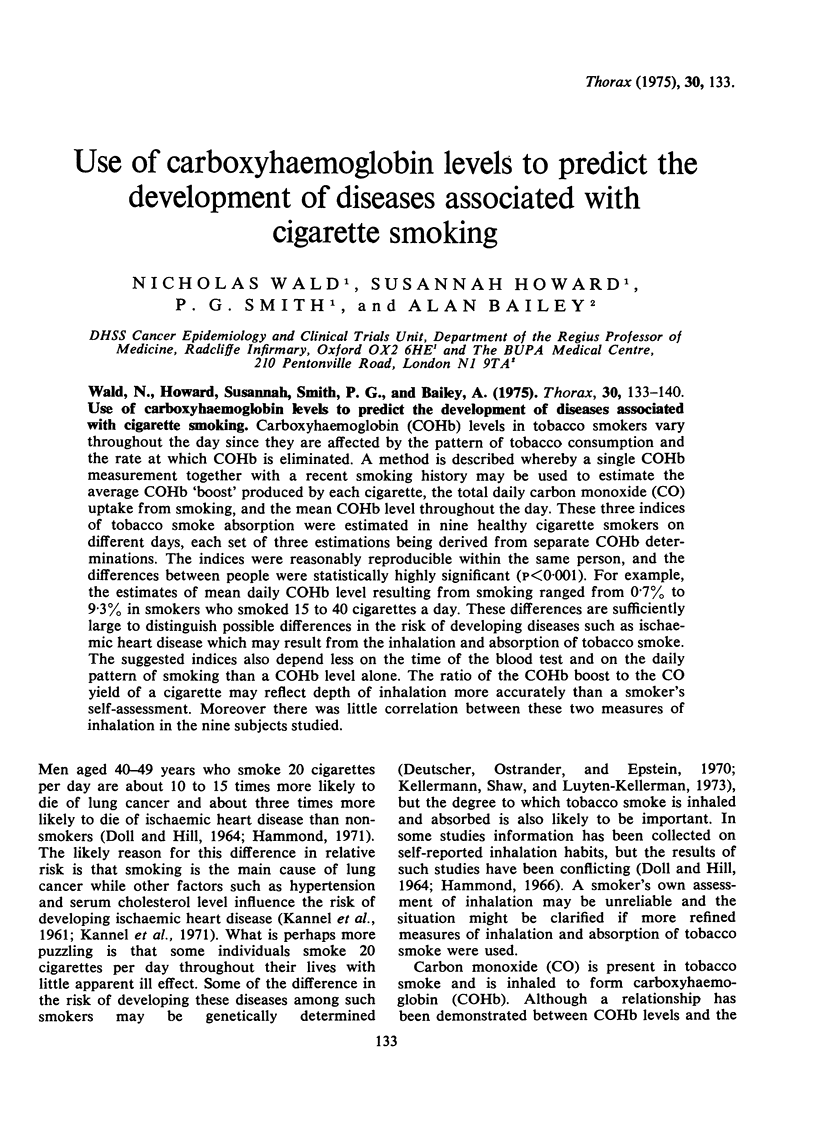
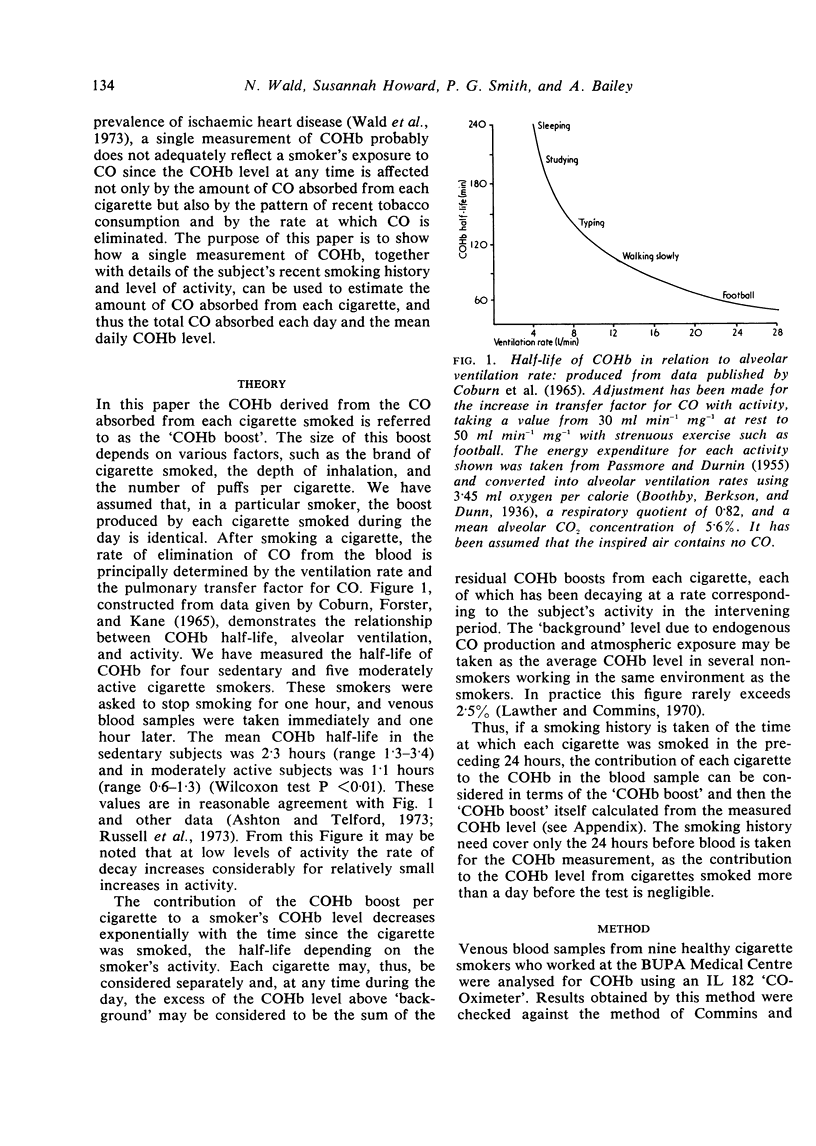
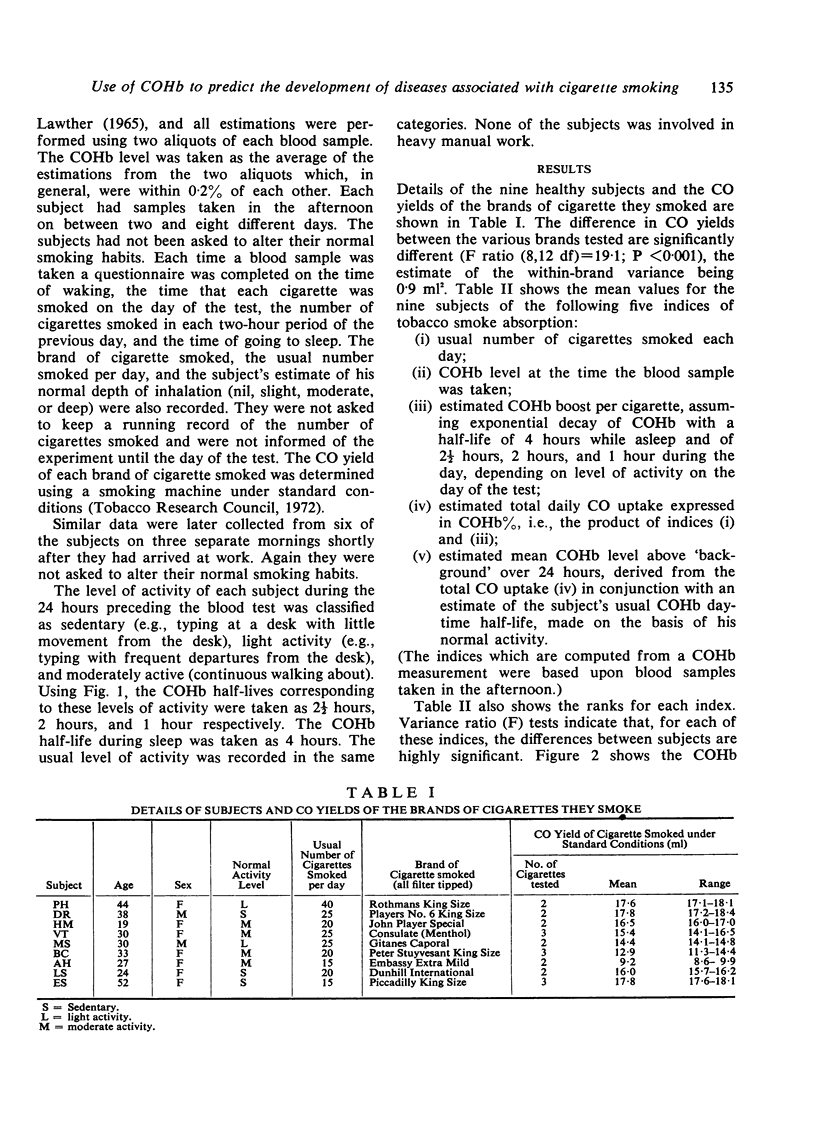
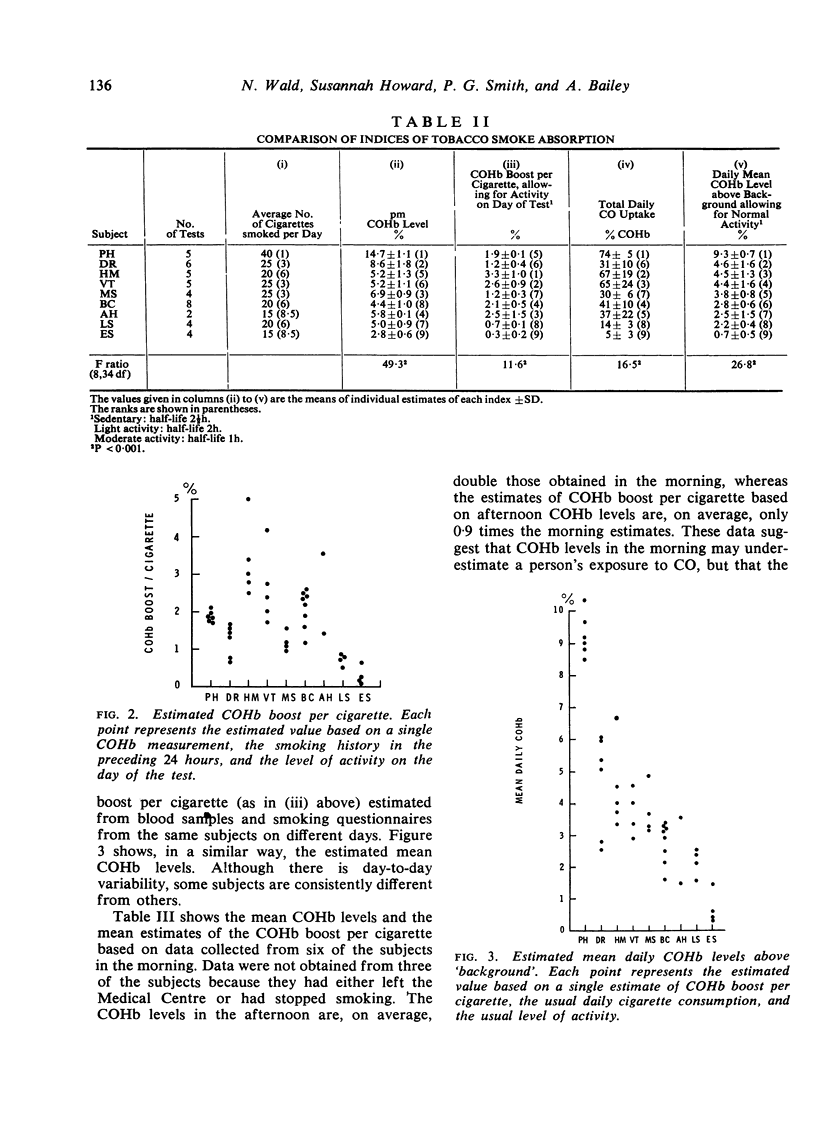
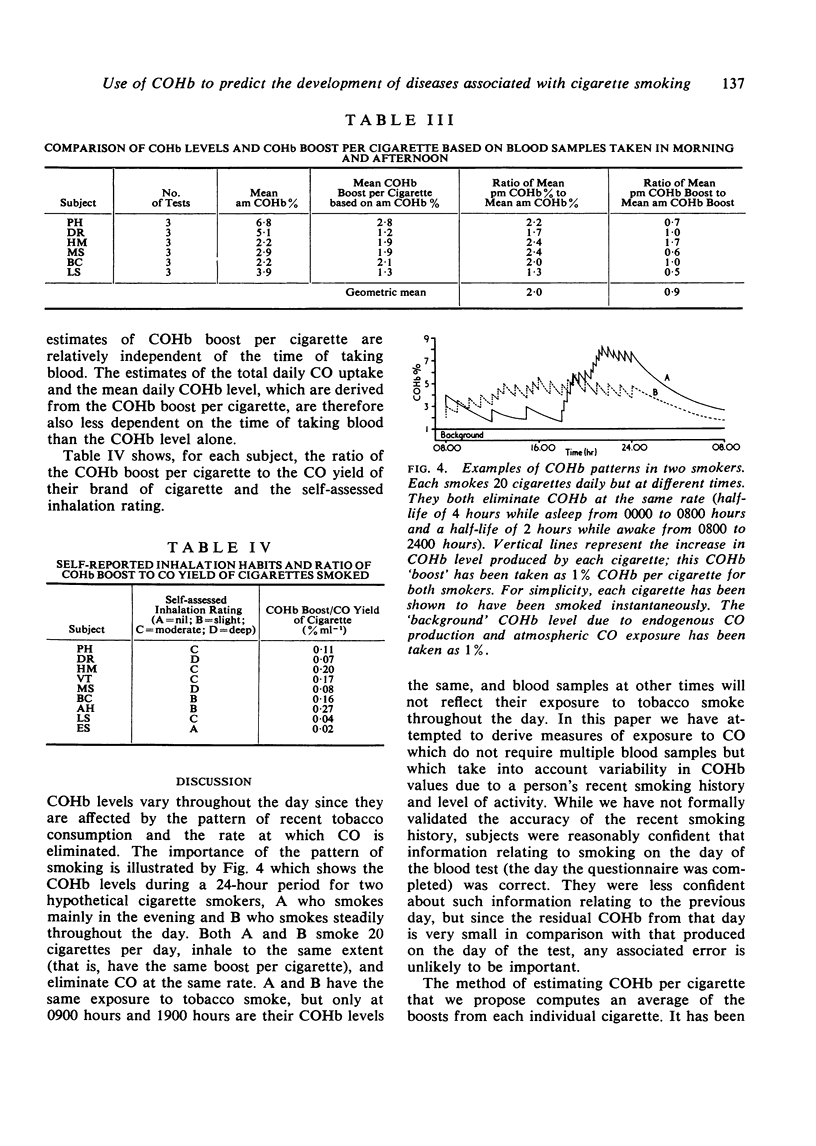
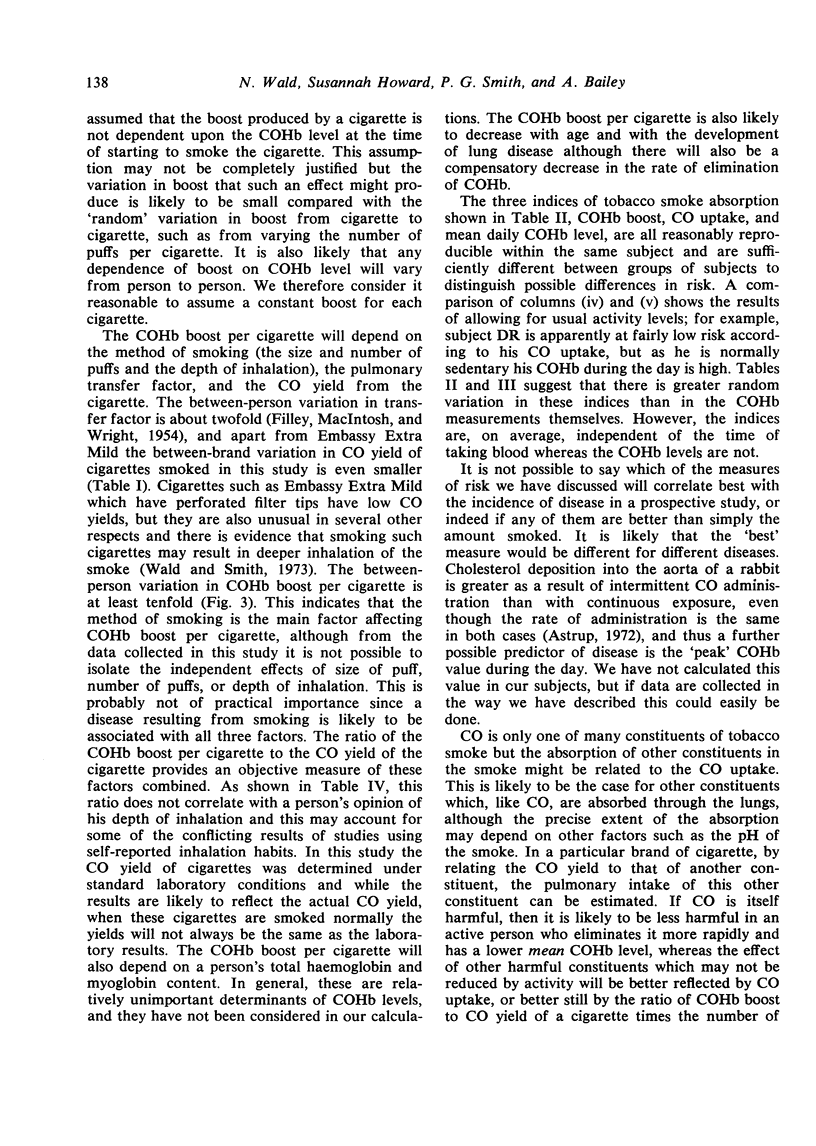
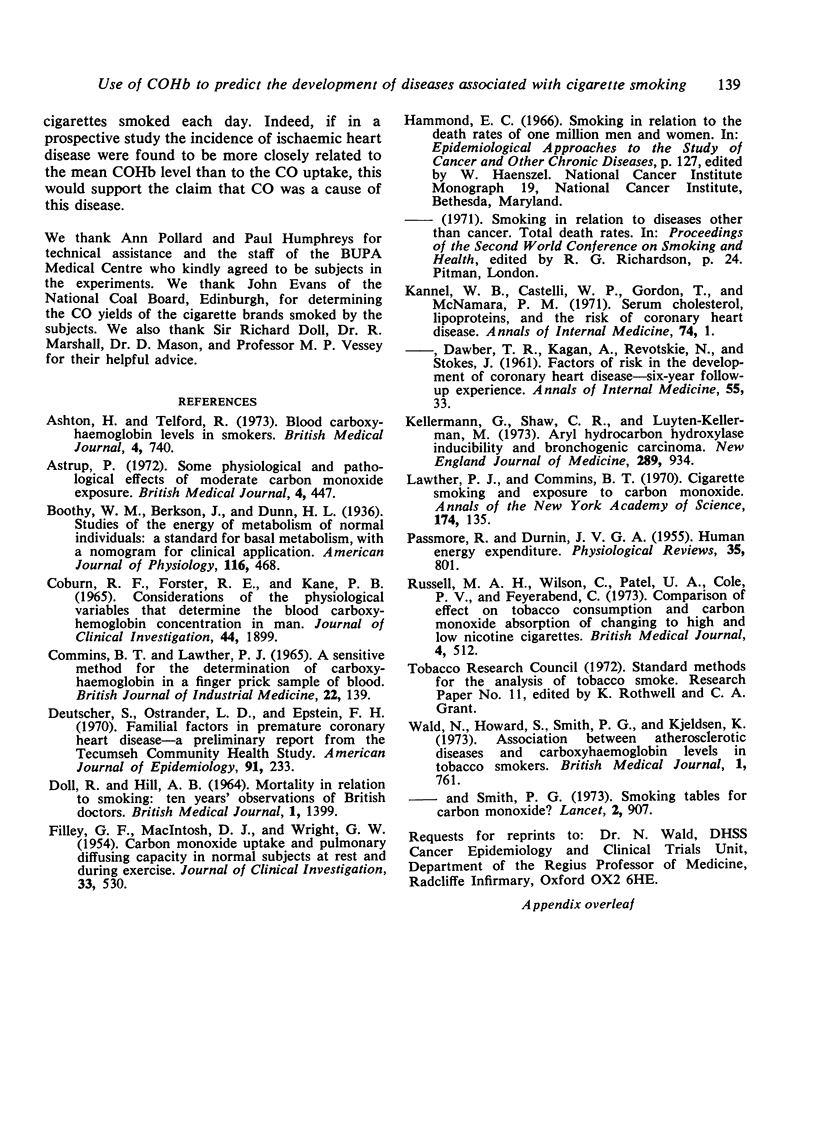
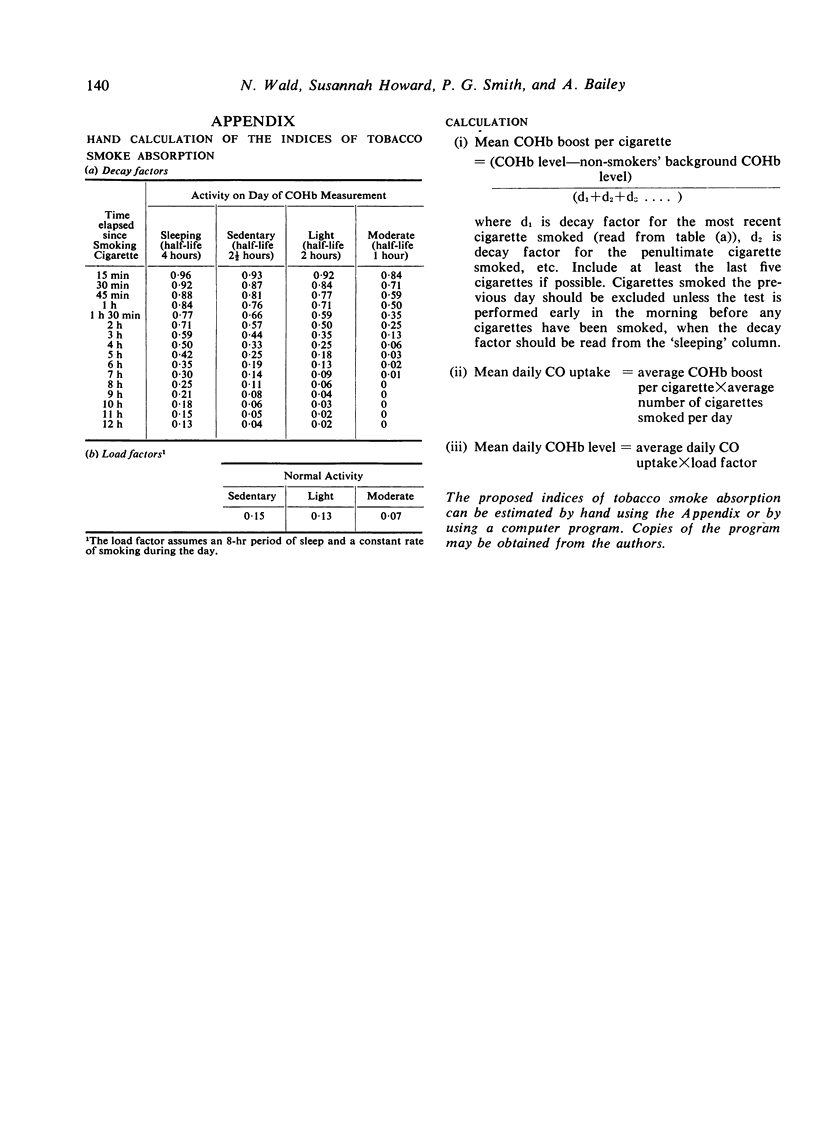
Selected References
These references are in PubMed. This may not be the complete list of references from this article.
- Ashton A., Telford R. Letter: Blood carboxyhaemoglobin levels in smokers. Br Med J. 1973 Dec 22;4(5894):740–740. doi: 10.1136/bmj.4.5894.740. [DOI] [PMC free article] [PubMed] [Google Scholar]
- Astrup P. Some physiological and pathological effects of moderate carbon monoxide exposure. Br Med J. 1972 Nov 25;4(5838):447–452. doi: 10.1136/bmj.4.5838.447. [DOI] [PMC free article] [PubMed] [Google Scholar]
- COMMINS B. T., LAWTHER P. J. A SENSITIVE METHOD FOR THE DETERMINATION OF CARBOXYHAEMOGLOBIN IN A FINGER PRICK SAMPLE OF BLOOD. Br J Ind Med. 1965 Apr;22:139–143. doi: 10.1136/oem.22.2.139. [DOI] [PMC free article] [PubMed] [Google Scholar]
- Coburn R. F., Forster R. E., Kane P. B. Considerations of the physiological variables that determine the blood carboxyhemoglobin concentration in man. J Clin Invest. 1965 Nov;44(11):1899–1910. doi: 10.1172/JCI105296. [DOI] [PMC free article] [PubMed] [Google Scholar]
- DOLL R., HILL A. B. MORTALITY IN RELATION TO SMOKING: TEN YEARS' OBSERVATIONS OF BRITISH DOCTORS. Br Med J. 1964 May 30;1(5395):1399–1410. doi: 10.1136/bmj.1.5395.1399. [DOI] [PMC free article] [PubMed] [Google Scholar]
- Deutscher S., Ostrander L. D., Epstein F. H. Familial factors in premature coronary heart disease--a preliminary report from the Tecumseh Community Health Study. Am J Epidemiol. 1970 Mar;91(3):233–237. doi: 10.1093/oxfordjournals.aje.a121133. [DOI] [PubMed] [Google Scholar]
- FILLEY G. F., MACINTOSH D. J., WRIGHT G. W. Carbon monoxide uptake and pulmonary diffusing capacity in normal subjects at rest and during exercise. J Clin Invest. 1954 Apr;33(4):530–539. doi: 10.1172/JCI102923. [DOI] [PMC free article] [PubMed] [Google Scholar]
- KANNEL W. B., DAWBER T. R., KAGAN A., REVOTSKIE N., STOKES J., 3rd Factors of risk in the development of coronary heart disease--six year follow-up experience. The Framingham Study. Ann Intern Med. 1961 Jul;55:33–50. doi: 10.7326/0003-4819-55-1-33. [DOI] [PubMed] [Google Scholar]
- Kannel W. B., Castelli W. P., Gordon T., McNamara P. M. Serum cholesterol, lipoproteins, and the risk of coronary heart disease. The Framingham study. Ann Intern Med. 1971 Jan;74(1):1–12. doi: 10.7326/0003-4819-74-1-1. [DOI] [PubMed] [Google Scholar]
- Kellermann G., Shaw C. R., Luyten-Kellerman M. Aryl hydrocarbon hydroxylase inducibility and bronchogenic carcinoma. N Engl J Med. 1973 Nov 1;289(18):934–937. doi: 10.1056/NEJM197311012891802. [DOI] [PubMed] [Google Scholar]
- PASSMORE R., DURNIN J. V. Human energy expenditure. Physiol Rev. 1955 Oct;35(4):801–840. doi: 10.1152/physrev.1955.35.4.801. [DOI] [PubMed] [Google Scholar]
- Russell M. A., Wilson C., Patel U. A., Cole P. V., Feyerabend C. Comparison of effect on tobacco consumption and carbon monoxide absorption of changing to high and low nicotine cigarettes. Br Med J. 1973 Dec 1;4(5891):512–516. doi: 10.1136/bmj.4.5891.512. [DOI] [PMC free article] [PubMed] [Google Scholar]
- Wald N., Howard S., Smith P. G., Kjeldsen K. Association between atherosclerotic diseases and carboxyhaemoglobin levels in tobacco smokers. Br Med J. 1973 Mar 31;1(5856):761–765. doi: 10.1136/bmj.1.5856.761. [DOI] [PMC free article] [PubMed] [Google Scholar]


